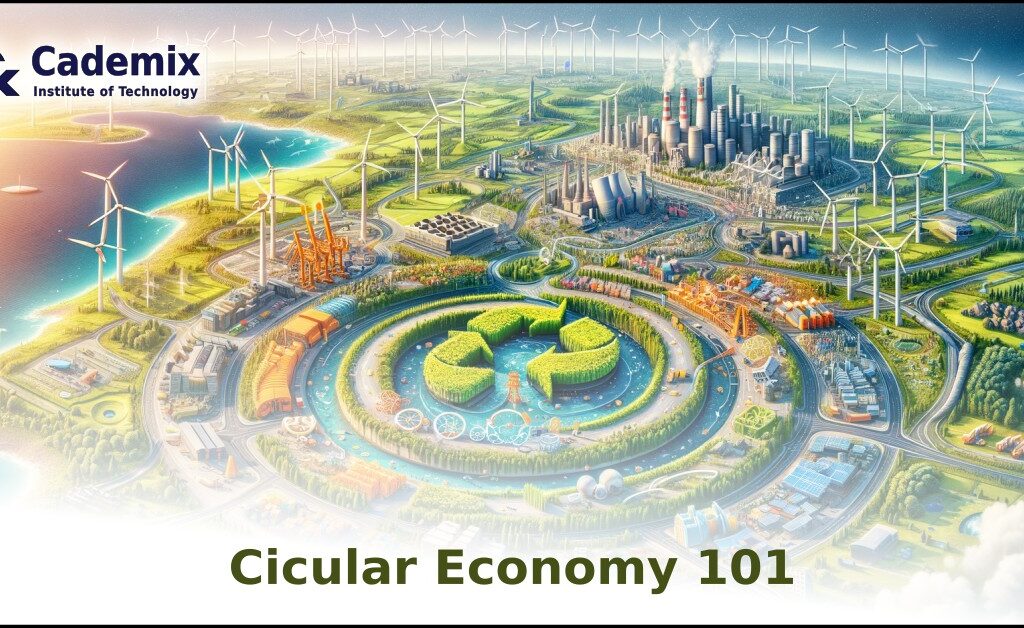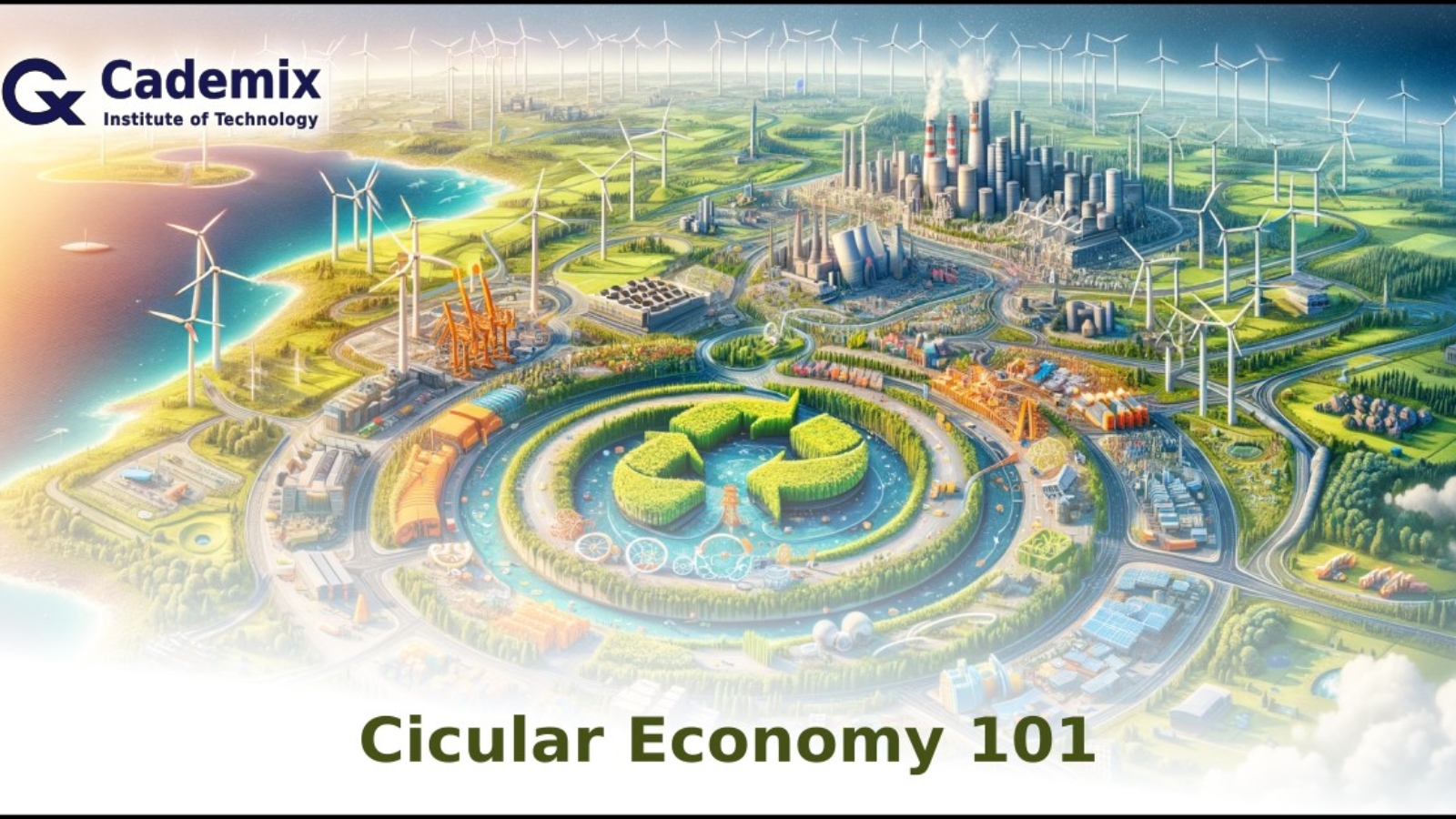This article delves into ‘Circular Economy 101’, offering an accessible yet comprehensive exploration of how recycling and reuse are critical to achieving a more sustainable future. It simplifies the intricate web of circular economy concepts, highlighting the transformative power of these practices in conserving resources and reducing environmental impact. The piece also demystifies key terms and terminologies in the field, providing readers with a solid foundation to understand and engage with circular economy principles.

Introduction to the Circular Economy and Its Core Principles
In today’s world, where the depletion of natural resources and environmental degradation are pressing concerns, the concept of the circular economy has emerged as a beacon of sustainable development. This approach, central to ‘Circular Economy 101’, marks a significant shift from the traditional linear economy, which follows a ‘take, make, dispose’ model, often leading to resource exhaustion and environmental harm.
The circular economy is built on the principles of designing out waste and pollution, keeping products and materials in use, and regenerating natural systems. It’s not just an environmental strategy; it’s a holistic approach that intertwines economic, environmental, and social dimensions, aiming to redefine growth and focus on positive society-wide benefits.
At the heart of this transformative model are two crucial practices: recycling and reuse. Recycling, the process of converting waste into new materials, plays a vital role in reducing the demand for raw materials and minimizing waste. Reuse, on the other hand, involves repurposing products or materials for new uses, extending their lifecycle and reducing the need for new production. Together, these practices form the backbone of a circular economy, enabling a more efficient and sustainable use of resources.
As we delve deeper into the circular economy, we’ll uncover how these practices are not just beneficial for the environment but are also key drivers of innovation and economic growth. They present opportunities for businesses to create value, for communities to enhance resilience, and for individuals to make a positive impact on the planet. By embracing the principles of the circular economy, we can forge a path towards a greener, more sustainable future, where resources are used wisely, and environmental impact is minimized.
Stay tuned as we explore the intricacies of recycling and reuse, and how they contribute to the circular economy’s goal of creating a more sustainable and prosperous world.
Recycling and Reuse: Pillars of a Sustainable Future
The terms ‘recycling’ and ‘reuse’ are often used interchangeably, yet they hold distinct places within the circular economy. Understanding their unique roles and synergies is essential in grasping the full potential of Circular Economy 101.
Recycling: Turning Waste into Resource
Recycling is the process of collecting and processing materials that would otherwise be thrown away as trash, turning them into new products. This practice is crucial in reducing the need for extracting, refining, and processing raw materials, which creates substantial air and water pollution. By recycling, we not only conserve resources but also reduce greenhouse gas emissions, helping to tackle climate change. Moreover, recycling spurs economic development by creating jobs in the recycling and manufacturing industries.
Reuse: Extending Product Life
Reuse involves using items repeatedly or repurposing them for different uses instead of discarding them. This practice extends the life of products, reduces waste, and limits the need for new resource extraction. Reuse can be as simple as using a shopping bag multiple times or as complex as refurbishing electronic devices. It not only saves resources but also encourages a shift in consumer behavior towards more sustainable practices.
Both recycling and reuse are integral to the circular economy, creating a loop where resources are utilized to their fullest potential. These practices challenge the traditional ‘take-make-waste’ model, emphasizing the importance of resource efficiency and the value of materials. By adopting recycling and reuse, businesses can reduce costs, mitigate risk, increase competitiveness, and build brand loyalty among environmentally conscious consumers.
In the following sections, we will dive into the essence of these practices, examining how they collectively power the circular economy and contribute significantly to a more sustainable and resilient future.
Essential Terms in Circular Economy and Their Real-World Impact
The field of the circular economy is rich with specialized terms and concepts. Here, we demystify 20 essential terms, providing a foundation for understanding the broader implications of Circular Economy 101.
- Circular Economy: An economic system aimed at eliminating waste and the continual use of resources, contrasting the traditional linear economy of ‘take, make, dispose.’
- Linear Economy: A conventional economic model based on a straight line of production: extracting resources, using them to make products, and then discarding the waste.
- Sustainability: Meeting our own needs without compromising the ability of future generations to meet their own needs.
- Resource Recovery: The extraction of useful materials or energy from waste, which can be recycled or converted into other forms.
- Upcycling: The process of transforming by-products, waste materials, or unwanted products into new materials or products of better quality or for better environmental value.
- Downcycling: The process of recycling a product in a way that degrades the quality of the materials over time.
- Life Cycle Assessment (LCA): A technique to assess the environmental impacts associated with all the stages of a product’s life, from raw material extraction through to disposal.
- Zero Waste: A philosophy that encourages the redesign of resource life cycles so that all products are reused, with no trash sent to landfills or incinerators.
- Cradle-to-Cradle Design: A biomimetic approach to design that models human industry on nature’s processes, where materials are viewed as nutrients circulating in healthy, safe metabolisms.
- Regenerative Design: A process-oriented systems theory based approach to design, mirroring the resilient and self-sustaining processes found in nature.
- Green Economy: An economic development model that considers the environmental impacts of economic activities.
- Bioeconomy: An economy where the basic building blocks for materials, chemicals, and energy are derived from renewable biological resources.
- Industrial Symbiosis: The process where waste or by-products of an industry or industrial process become the raw materials for another.
- Product Stewardship: The act of minimizing the environmental impact of products throughout all stages of their life cycle, including end-of-life management.
- Extended Producer Responsibility (EPR): An environmental policy approach in which a producer’s responsibility for a product is extended to the post-consumer stage of the product’s life cycle.
- Closed Loop System: A system where products and materials are reused, remanufactured, or recycled back into the market or for further use.
- Decoupling: Separating economic growth from the consumption of finite resources and environmental degradation.
- Renewable Resources: Natural resources that can be replenished over time, such as sunlight, wind, rain, tides, waves, and geothermal heat.
- Carbon Footprint: The total amount of greenhouse gases emitted directly and indirectly by an individual, organization, event, or product.
- Eco-design: The practice of designing products with special consideration for the environmental impacts of the product during its whole lifecycle.
These terms encapsulate the core ideas and practices within the circular economy, each playing a pivotal role in shaping a sustainable future. Understanding these terms is crucial for anyone looking to engage with and contribute to the circular economy, whether as a consumer, business leader, policymaker, or concerned citizen.
Challenges, Opportunities, and the Global Perspective
While the principles of the circular economy offer a hopeful pathway towards sustainability, implementing them presents both challenges and opportunities on a global scale.
Addressing the Challenges
One of the main challenges in transitioning to a circular economy is the overhaul of existing linear systems and infrastructures. This shift requires significant investment, innovation, and collaboration across sectors. Additionally, consumer behavior and cultural mindsets geared towards disposability and consumption pose significant hurdles. Overcoming these challenges necessitates widespread education, policy reform, and incentives that encourage sustainable practices.
Harnessing the Opportunities
Despite these challenges, the circular economy presents immense opportunities. For businesses, it opens up new avenues for innovation and competitiveness. Products designed for reuse, repair, and recycling can lead to cost savings and new market opportunities. For governments and societies, the circular economy promises enhanced resource security, job creation, and reduced environmental impact. It also offers a way to address critical issues like climate change and biodiversity loss.
The Global Impact
On a global level, the circular economy has the potential to reshape economies and supply chains, promoting more equitable and sustainable development. Many countries and international organizations are already adopting circular economy principles, recognizing their role in achieving the United Nations Sustainable Development Goals (SDGs). The circular economy is not just a local or national concept but a global movement, with the power to transform how we live, work, and interact with our planet.
As we move forward, it’s clear that the circular economy isn’t just an option but a necessity for a sustainable future. The journey towards this goal is complex and multifaceted, but the rewards – a healthier planet, a more resilient economy, and a better quality of life for all – are immeasurable.
Concluding Thoughts on a Greener Planet
As we conclude our exploration of ‘Circular Economy 101’, it’s evident that the shift from a linear to a circular model is not just beneficial but imperative for a sustainable future. This journey requires a collective effort from individuals, businesses, and governments to rethink and redesign the way we produce, consume, and dispose of goods.
The circular economy is more than a set of practices; it’s a mindset shift towards sustainability, where every action and decision contributes to a larger goal of environmental conservation and resource efficiency. By embracing recycling and reuse, we can significantly reduce our environmental footprint, stimulate economic growth, and create a more equitable world.
This article has aimed to demystify the concept of the circular economy, making it accessible and understandable. The journey towards a circular economy is ongoing and evolving. It presents challenges but also immense opportunities to innovate, create value, and protect our planet for future generations.
As we move forward, let us remember that each step we take towards recycling, reusing, and reducing waste, no matter how small, is a step towards a more sustainable and resilient world. The circular economy is not just a theoretical concept; it’s a practical solution to many of our environmental challenges and a roadmap to a greener, more prosperous planet.

